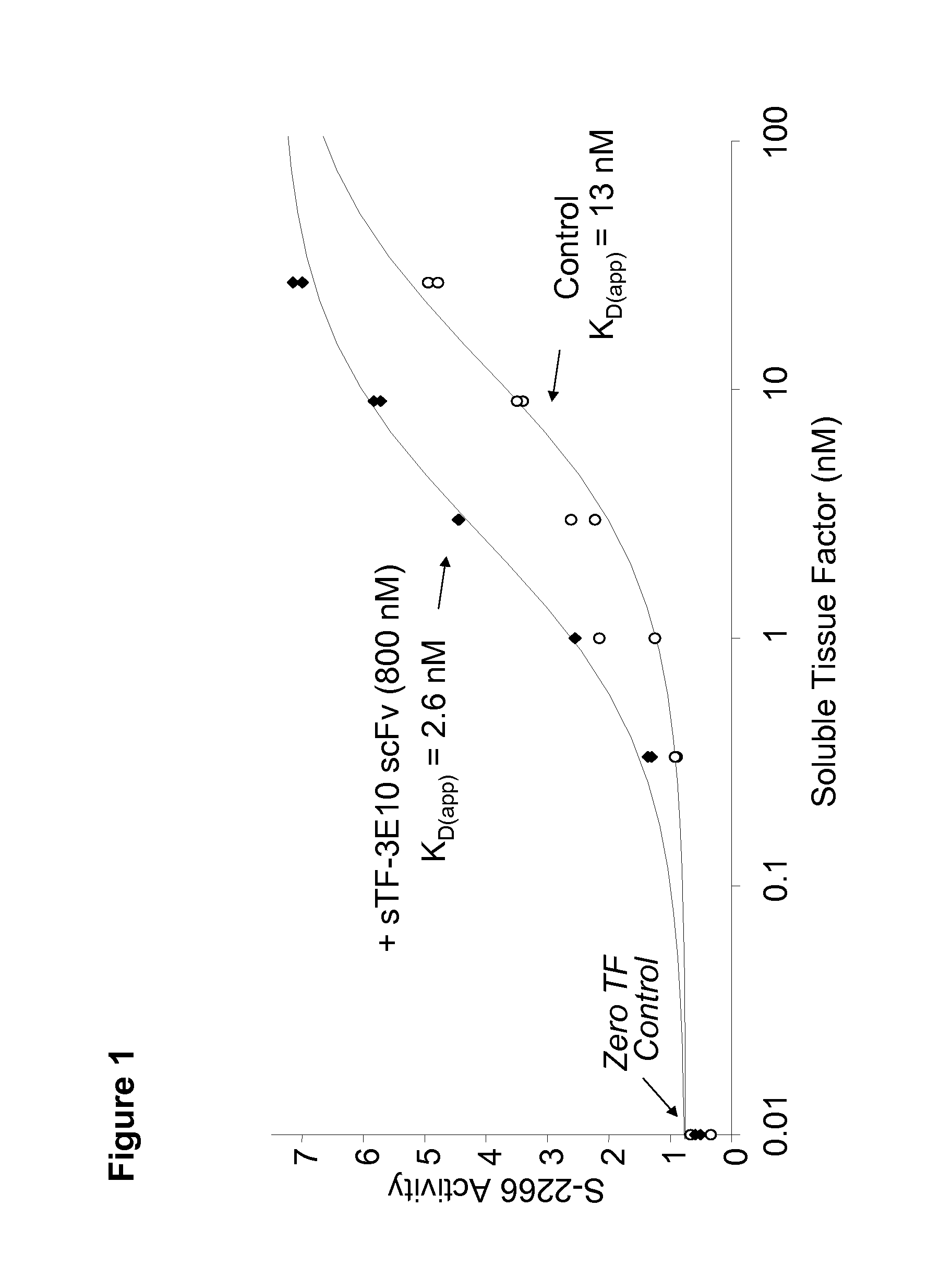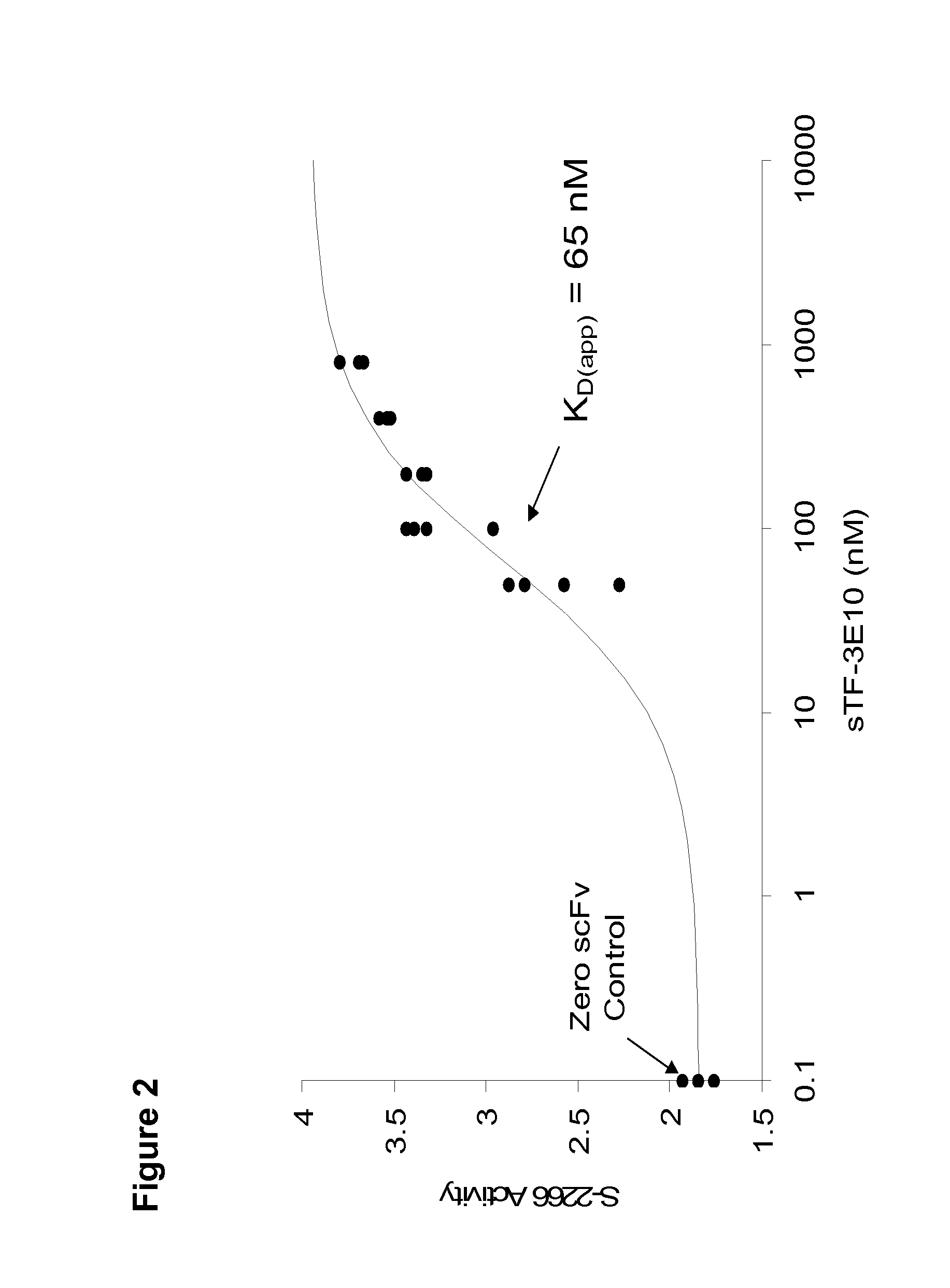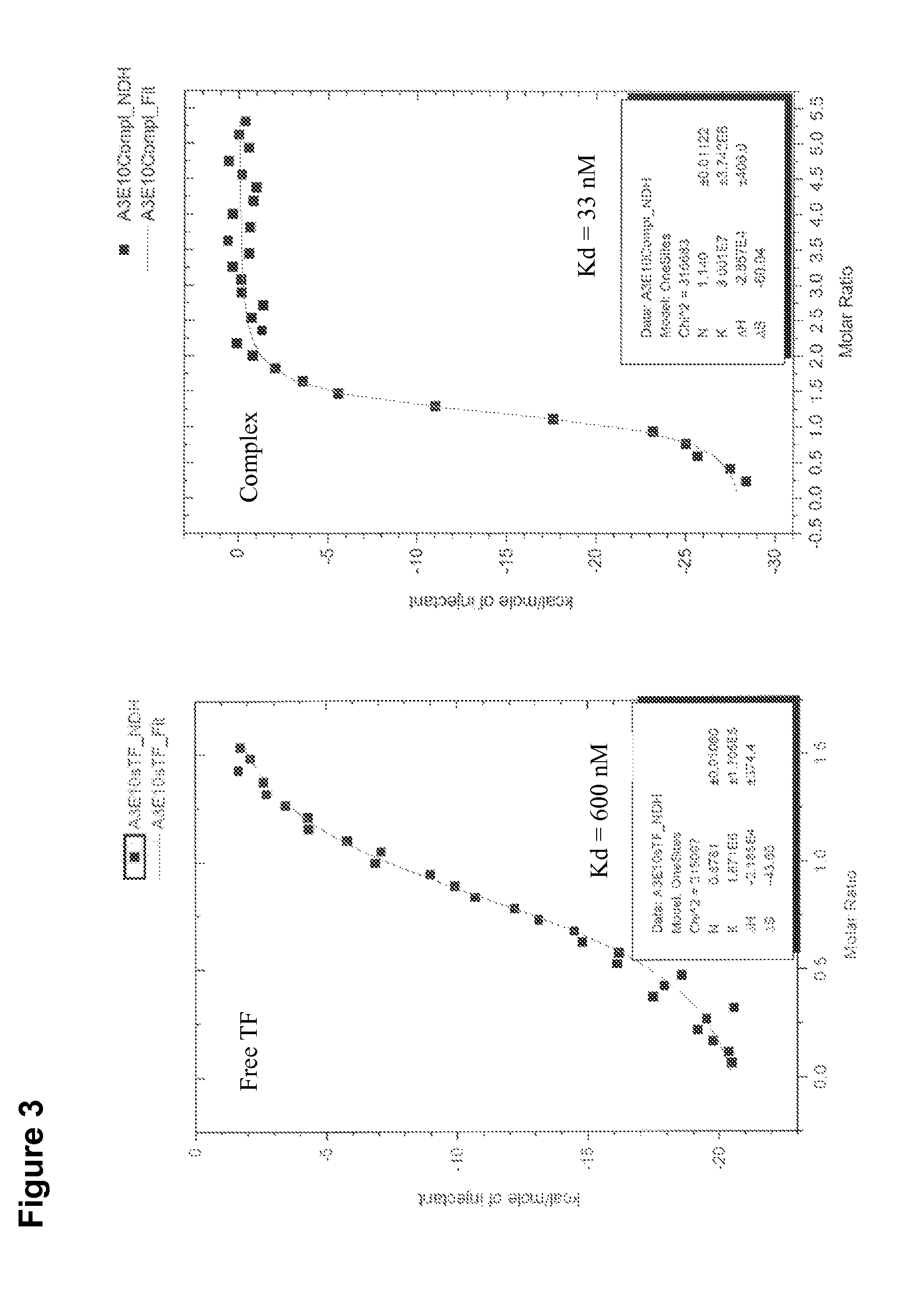Polynucleotides encoding anticoagulant fusion proteins
a technology of anticoagulant fusion and polynucleotide, which is applied in the direction of fusion polypeptide, packaged goods type, peptide/protein ingredients, etc., can solve the problems of venous thrombosis, life-threatening thrombosis and/or contribute to pathological complications, and activate inflammatory pathways, so as to inhibit the generation of thrombin
- Summary
- Abstract
- Description
- Claims
- Application Information
AI Technical Summary
Benefits of technology
Problems solved by technology
Method used
Image
Examples
example 1
Single Chain Anti-TF Antibody Construct scFv(TF)3e10
[0146]
(−18) M L G V L V L G A L A L A G L V F P E M A QV N L R E S G G T L V Q P G G S L R L S C A A SG F S F T D A W M S W V R Q A P G K E L E W V SS I S G S G G S T Y Y A G S V K G R F T I S R DN S K N T L Y L Q M N S L R A E D T A V Y Y C AR V L S L T D Y Y W Y G M D V W G Q G T L V T VS A G G G G S G A P N F M L T Q P H S V S A S PG K T V T I S C T R S S G S V A S Y Y V Q W Y QQ R P G S S P T T V I Y E D N H R P S G V P D RF S G S I D T S S N S A S L T I S G L K T E D EA D Y Y C Q S Y D S N N L V V F G G G T K L T VL G A A A G A P V P Y P D P L E P R A A (264)
[0147]The single chain anti-TF antibody scFv(TF)3e10 (SEQ ID NO:1) consists of a signal peptide (−18 to ...
example 2
Fusion Protein Construct 1—scFv(TF)3e10-TMi456
[0148]
[0149]
(−18) M L G V L V L G A L A L A G L V F P E M A QV N L R E S G G T L V Q P G G S L R L S C A A SG F S F T D A W M S W V R Q A P G K E L E W V SS I S G S G G S T Y Y A G S V K G R F T I S R DN S K N T L Y L Q M N S L R A E D T A V Y Y C AR V L S L T D Y Y W Y G M D V W G Q G T L V T VS A G G G G S G A P N F M L T Q P H S V S A S PG K T V T I S C T R S S G S V A S Y Y V Q W Y QQ R P G S S P T T V I Y E D N H R P S G V P D RF S G S I D T S S N S A S L T I S G L K T E D EA D Y Y C Q S Y D S N N L V V F G G G T K L T VL G A A A G G G G S G G G G S G G G G S V E P VD P C F R A N C E Y Q C Q P L N Q T S Y L C V CA E G F A P I P G E ...
example 3
Fusion Protein Construct 2—scFv(TF)3e10-TMi456Δ
[0151]
[0152]
(−18) M L G V L V L G A L A L A G L V F P E M A QV N L R E S G G T L V Q P G G S L R L S C A A SG F S F T D A W M S W V R Q A P G K E L E W V SS I S G S G G S T Y Y A G S V K G R F T I S R DN S K N T L Y L Q M N S L R A E D T A V Y Y C AR V L S L T D Y Y W Y G M D V W G Q G T L V T VS A G G G G S N F M L T Q P H S V S A S P G K TV T I S C T R S S G S V A S Y Y V Q W Y Q Q R PG S S P T T V I Y E D N H R P S G V P D R F S GS I D T S S N S A S L T I S G L K T E D E A D YY C Q S Y D S N N L V V F G G G T K L T V L G AA A G G G G S G G G G S G G G G S V E P V D P CF R A N C E Y Q C Q P L N Q T S Y L C V C A E GF A P I P G E P H R...
PUM
 Login to View More
Login to View More Abstract
Description
Claims
Application Information
 Login to View More
Login to View More - R&D
- Intellectual Property
- Life Sciences
- Materials
- Tech Scout
- Unparalleled Data Quality
- Higher Quality Content
- 60% Fewer Hallucinations
Browse by: Latest US Patents, China's latest patents, Technical Efficacy Thesaurus, Application Domain, Technology Topic, Popular Technical Reports.
© 2025 PatSnap. All rights reserved.Legal|Privacy policy|Modern Slavery Act Transparency Statement|Sitemap|About US| Contact US: help@patsnap.com



